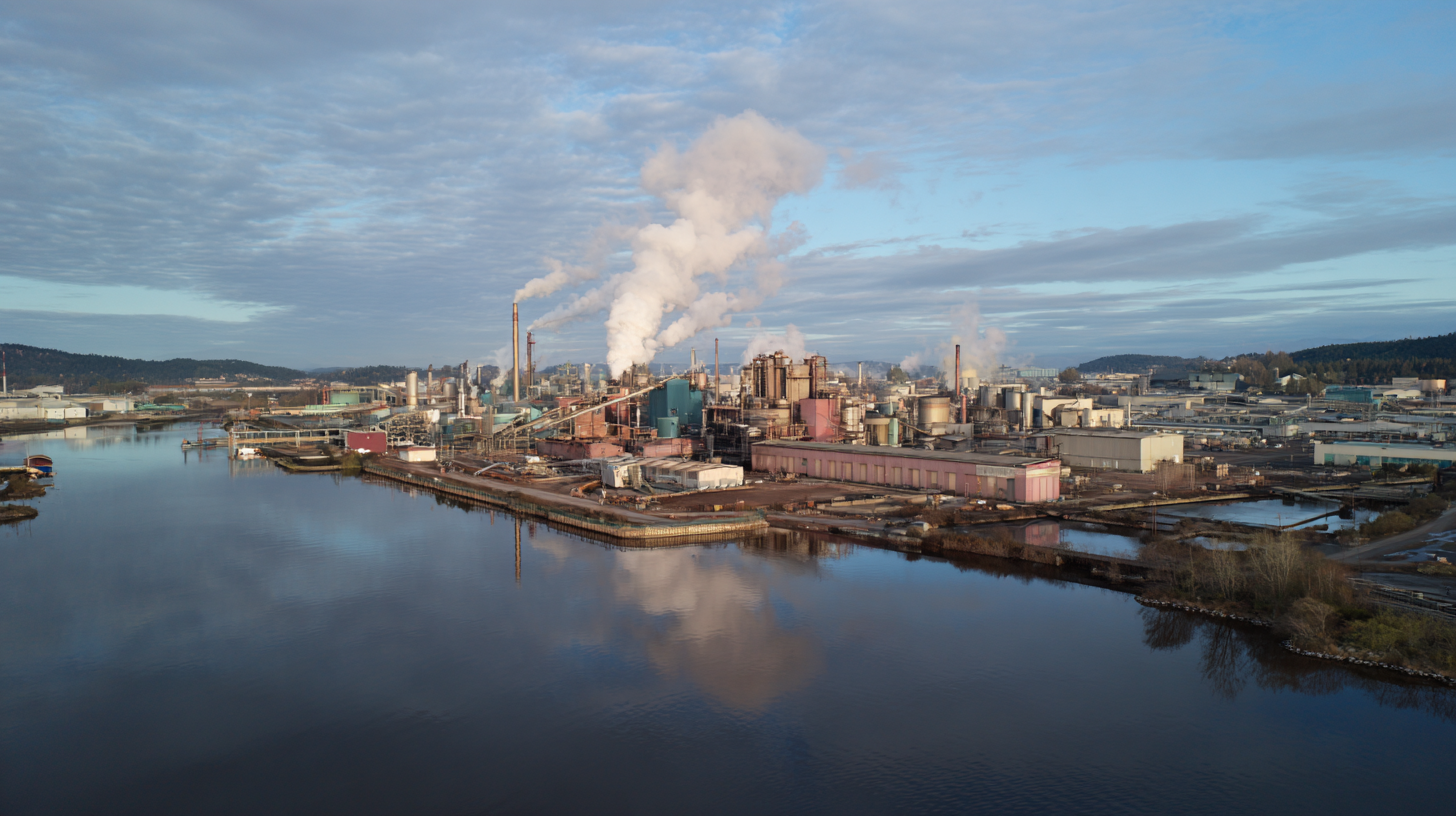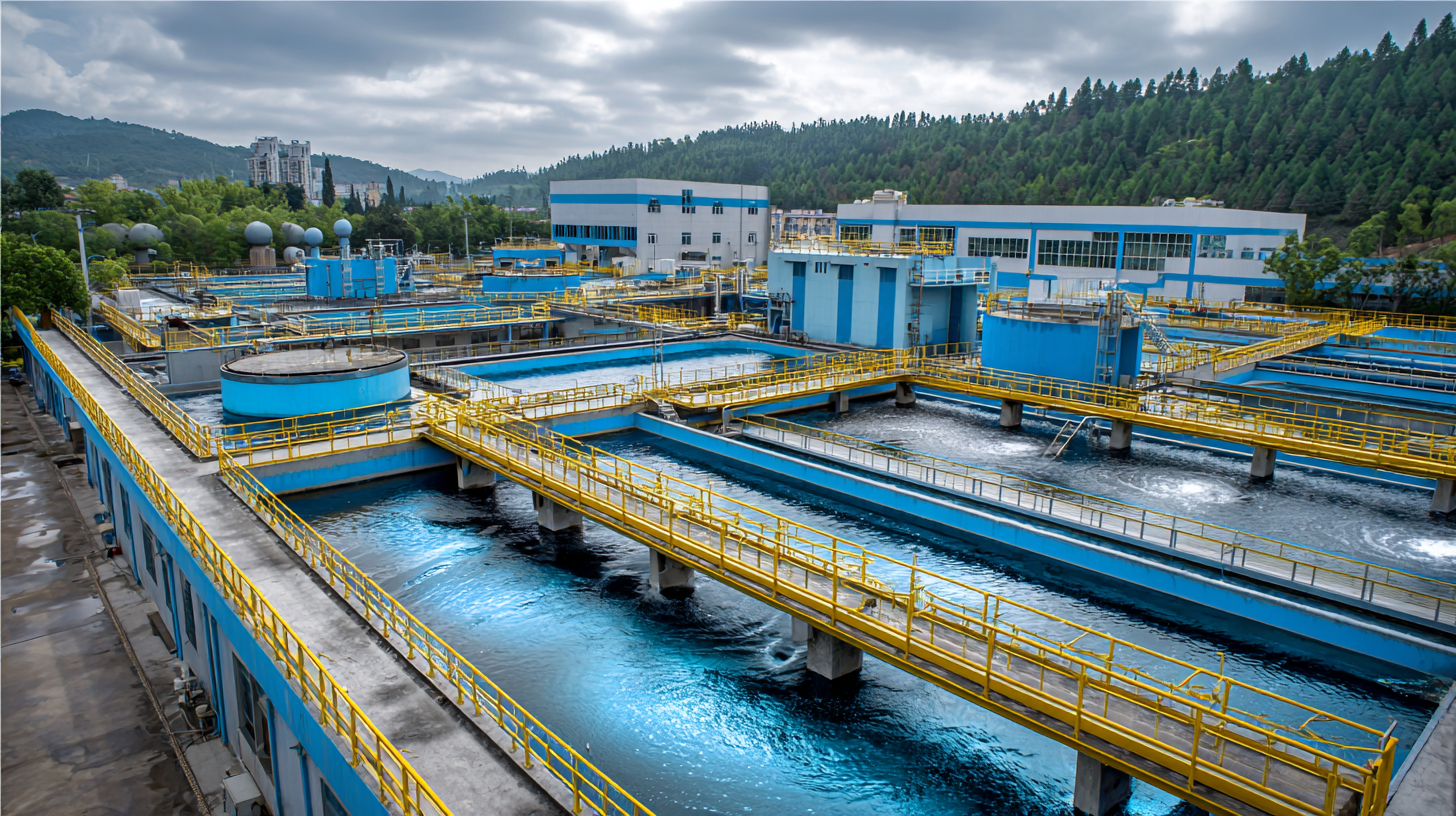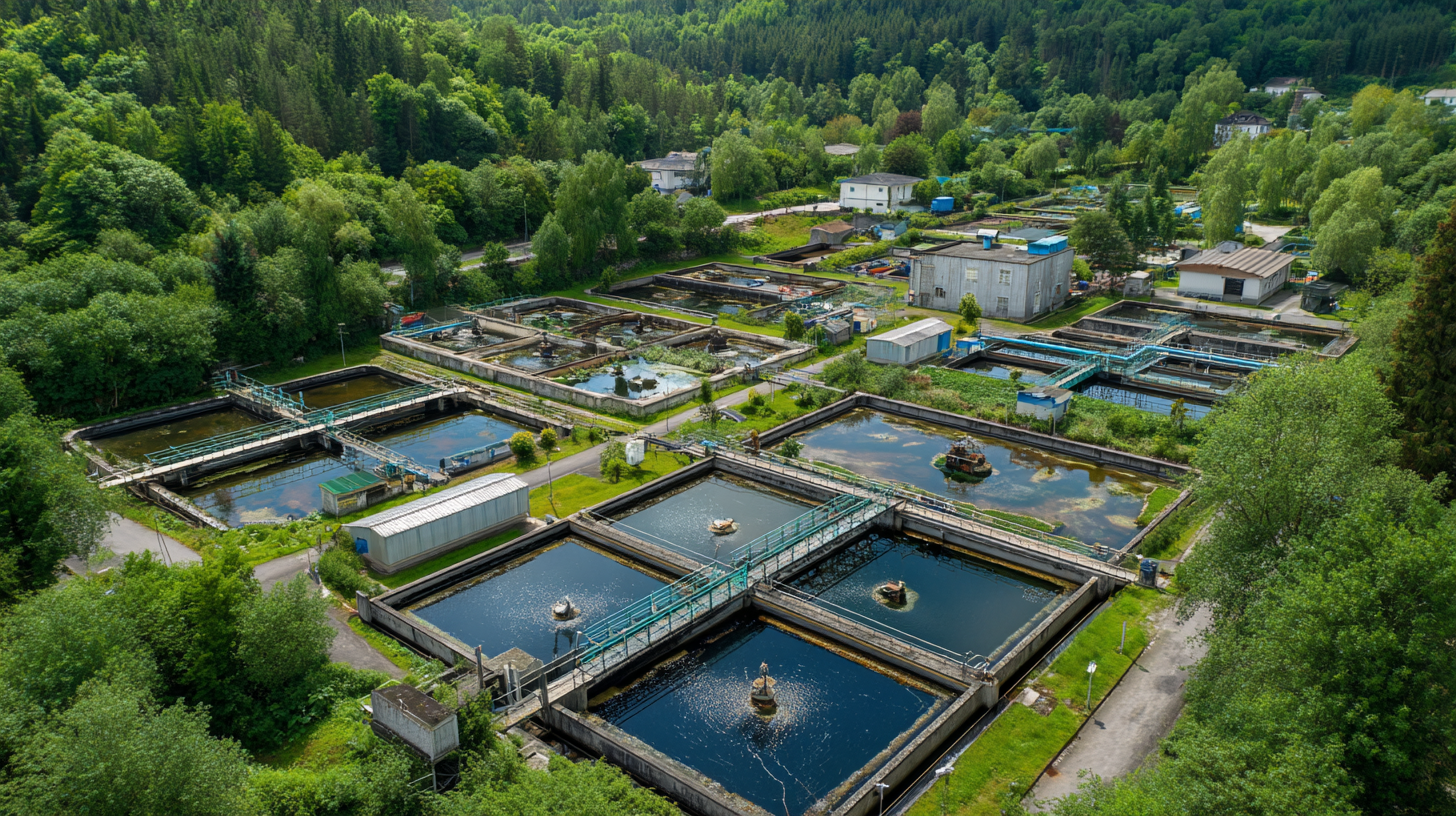The wastewater treatment process in the paper industry is pretty crucial when it comes to keeping our environment healthy, all while making sure things run smoothly on the operational side. You see, the paper-making world produces a ton of wastewater, and it’s filled with all sorts of pollutants — not exactly something you’d want just dumped into nature. According to a report from the National Council for Air and Stream Improvement (NCASI), up to 95% of the freshwater used in making paper ends up as wastewater. That’s a huge chunk, so treating it properly is a must. Luckily, companies like APEX are stepping up to the plate, developing top-notch sludge drying and conveying equipment tailored for those tricky, high-difficulty wastewater scenarios. And with the global push for more sustainable practices, APEX’s innovative solutions aren’t just staying local — they’re reaching out internationally, too. By embracing the latest tech in wastewater treatment, paper manufacturers can really boost their efficiency, cut costs, and stay on the right side of environmental laws. All in all, this means a step closer to a greener future for everyone.

The paper industry produces quite a lot of wastewater, which honestly raises some serious environmental worries and racks up quite a bit of operational expenses. As everyone’s talking more and more about sustainability these days, it really makes sense to look into greener ways to treat that wastewater. Lately, advanced biological treatments, like anaerobic digestion, have become pretty popular as effective solutions. Not only does this process clean up the wastewater, but it also turns the organic stuff into biogas—think of it as renewable energy you can actually use. So, by jumping on this technology, paper companies can cut down their environmental impact and also produce some energy to help power their operations—pretty neat, right?
And there’s more: integrating membrane filtration systems seems pretty promising too. These fancy systems use cutting-edge filters to strip out the nasty contaminants from wastewater, while also recovering useful by-products, like cellulose fibers. That means less wastewater needing treatment, and more resources being reused—kind of like a circular economy in action within the paper world. If businesses start adopting these tech-savvy approaches, they can really boost their wastewater treatment game, help the planet a bit more, and stick to environmental rules without breaking a sweat.
When it comes to making wastewater treatment as efficient as possible, the paper industry really stands to gain a lot from innovative tech. APEX Company, a big name in high-level wastewater equipment, is right at the forefront of this shift. By bringing in cutting-edge solutions for sludge drying and conveying, factories can cut down on energy use and make their treatment processes way more reliable.
Tip 1: Go for Automated Systems - Automation can really smooth out the workflow and help avoid mistakes that humans might make. Setting up automated monitoring tools means you get real-time data and can tweak things on the fly, leading to better overall performance.
Tip 2: Embrace Advanced Filtration Tech - New filtration methods like membrane bioreactors and granular activated carbon do a fantastic job at removing contaminants. Not only do they improve water quality, but they also help companies meet tough regulatory standards.
By adopting these smart solutions, paper manufacturers can make their wastewater treatment more efficient—and at the same time, play a part in creating a greener, more sustainable industry. And with APEX’s trusted equipment, they’ve got a real partner on this journey, ensuring everything runs smoothly while meeting global demands.

When it comes to improving wastewater treatment in the paper industry, picking the right approach is really key to making the whole process more efficient and effective. You’ve got two main options: chemical treatments and biological ones, each with their own perks and quirks. Chemical methods, like coagulation, flocculation, and disinfection, can quickly get rid of pollutants and boost water quality. The catch? They usually create secondary waste that also needs handling, which can make the whole process a bit more complicated.
On the flip side, biological treatment relies on microorganisms to naturally break down organic matter and contaminants. It’s generally more eco-friendly, producing less hazardous sludge and even allowing for nutrients to be recovered. Plus, in the long run, it might save some cash, even if it takes a little more time. Of course, you’ve gotta keep a close eye on the environmental conditions and make sure those microbes are kept happy and working at their best. By really understanding what your wastewater system needs, industries can thoughtfully weigh their options between chemical and biological methods to optimize their operations and get better results.

Advanced membrane filtration is honestly a game-changer when it comes to improving wastewater treatment in the paper industry. Basically, it helps separate out solids, organic stuff, and nasty contaminants, leaving you with much cleaner water. By using membranes with different pore sizes, operators can really zero in on specific pollutants, all while cutting down on chemical usage. Not only does this technology help meet environmental regs, but it also lets you reclaim some valuable resources from the waste — pretty cool, right?
If you're looking to get the most out of this system, here are a few tips. First off, make it a habit to check how your membranes are performing—routine maintenance is key to avoiding fouling and keeping everything flowing smoothly. It’s also a good idea to add some pre-treatment steps, like microfiltration, to give your membranes a longer life and cut down on costs. And don’t forget about automation and real-time data — integrating those can really help you tweak things on the fly, especially when water quality is all over the place.
Getting advanced membrane filtration into your wastewater strategy is a solid step towards being more sustainable. By embracing innovation, you can recover more water and even reuse materials, which not only saves money but is better for the environment overall.
You know, when it comes to the paper industry, dealing with wastewater isn't just about ticking boxes for regulators—it's also about running a sustainable, responsible operation. A recent report from the American Forest & Paper Association points out that paper mills can churn out as much as 300,000 gallons of wastewater every single day. And, get this, around 30% of that water is actually packed with harmful pollutants. That’s a huge deal, and it really calls for some smart, cost-effective solutions to clean things up without breaking the bank. Techniques like advanced oxidation processes, or AOPs, have shown some pretty impressive results—cutting chemical oxygen demand (COD) by as much as 80%. That means not only cleaner water but also less energy use and lower costs overall.
Finding that sweet spot between being efficient and protecting the environment is super important here. The EPA’s research suggests that by upgrading to smarter filtration tech, mills can cut down sludge production by half. That’s great because it means less waste to haul away and fewer trips to landfills. Plus, tech like IoT sensors that monitor water quality in real-time can help plants react quickly if something’s off—saving on chemicals and making the whole process more effective. Investing in these kinds of innovations isn’t just about keeping in line with regulations; it’s also a smart move towards more eco-friendly practices. It honestly shows that you can be both efficient and environmentally responsible at the same time—something the paper industry is definitely moving toward.
In the paper industry, getting wastewater treatment right is pretty essential if you want to run things smoothly and stay friendly to the environment. Recent reports show that more than 15% of the overall production costs end up going toward managing waste water. So, trying out different treatment methods isn't just about saving some bucks—it also helps companies stay on top of all those tough new regulations.
For example, there’s this plant in Germany that cut their treatment costs by about 30% by switching to some really advanced sludge drying tech, proving that big savings and greener practices are totally doable.
Now, APEX Company is a big name when it comes to
top-notch sludge drying and conveying gear. We’ve played a key role in helping companies switch to better solutions.
Our wastewater treatment systems, especially those that are complex and tricky to handle, have been put into use
successfully in a bunch of projects, leading to some pretty impressive results.
Take a case from a paper mill in China — they used our sludge drying tech and saw water usage drop by 25%, plus they managed to cut down the amount of sludge they had to deal with by 40%. As more and more companies around the world are asking for this kind of innovative equipment, APEX keeps earning praise from satisfied clients for our focus on efficiency and caring for the environment. By using these advanced methods and tools, paper makers can really step up their wastewater game—saving costs and doing their part for the planet at the same time.
: Technologies such as automated systems, advanced filtration methods like membrane bioreactors and granular activated carbon, as well as sludge drying and conveying solutions, can significantly enhance efficiency.
Automation streamlines workflows, minimizes human error, and allows for real-time adjustments to optimize treatment efficiency and overall performance.
Advanced membrane filtration enhances the separation of solids, organic matter, and contaminants, resulting in cleaner effluent and improved compliance with environmental regulations.
Regular monitoring and routine maintenance are essential to prevent fouling, while investing in pre-treatment processes like microfiltration can extend the membranes' lifespan.
AOPs can significantly reduce chemical oxygen demand (COD) by up to 80%, leading to lower energy consumption and operational costs, making them a cost-effective solution.
IoT sensors allow real-time monitoring of water quality, enabling mills to respond quickly to contamination levels, minimize chemical usage, and enhance treatment effectiveness.
Balancing these factors supports regulatory compliance and promotes sustainable operations, demonstrating that waste treatment can be efficient while also respecting environmental stewardship.
Innovative solutions like advanced filtration and automation can increase water recovery and the potential for reusable materials, making wastewater treatment more economically viable and environmentally friendly.
Smarter filtration can reduce sludge generation by 50%, leading to less frequent disposal and decreased contributions to landfills, promoting a more sustainable approach to waste management.
When it comes to tackling wastewater treatment in the paper industry, finding sustainable and effective solutions is more important than ever. Thanks to all the recent tech innovations, processes are becoming not just more efficient but also smarter. In this post, I want to dive into a comparison between chemical and biological treatment methods—kind of like weighing the pros and cons—and highlight how advanced membrane filtration can really make a difference in managing wastewater better. Oh, and we’ll also look at some budget-friendly options that aim to balance cost, performance, and ecological responsibility.
We'll also check out some real-world case studies where companies have successfully adopted alternative treatment approaches. It’s a good reminder that the industry needs to keep evolving and adapting. Since APEX Company specializes in state-of-the-art wastewater treatment gear, our goal is to share insights that can help others optimize their processes for maximum efficiency while still being kind to the environment. It’s all about finding that sweet spot, right?







